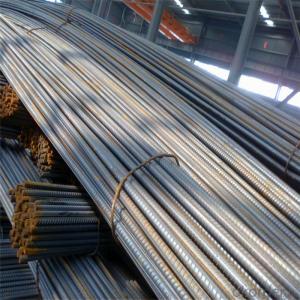When constructing a building, the foundation is crucial, and within that foundation lies the importance of rebar, or reinforcing bar. It’s not just a piece of metal; it’s the backbone of the structure. Imagine a skyscraper without it – it’s like a tree without roots, unstable and unable to withstand the test of time. But what exactly is rebar, and why is its installation so critical? Let’s dive into the world of construction and find out.
What is Rebar?
Rebar, short for reinforcing bar, is a common term for ribbed steel bars used in reinforced concrete and reinforced masonry structures. It’s made from carbon, steel, and other materials that give it the strength and durability needed to support the concrete. The ribbing you see on the bars is there to increase the bond between the rebar and the concrete, ensuring a strong and stable structure.
The Role of Rebar in Construction
Rebar plays a vital role in construction projects. It’s the silent hero that holds everything together. Here’s how it does its job:
– Strengthening: Rebar adds tensile strength to the concrete, allowing it to withstand heavy loads and prevent cracking or breaking.
– Flexibility: The flexibility of rebar allows it to bend and adapt to the shape of the structure, providing support where it’s needed most.
– Durability: Rebar is resistant to corrosion and other environmental factors, ensuring the longevity of the structure.
– Fire Resistance: In the unfortunate event of a fire, rebar can help the structure maintain its integrity, protecting it from collapse.
The Proper Installation of Rebar
Now that we know the importance of rebar, let’s talk about how to install it properly. Proper installation is not just about following a set of rules; it’s about understanding the purpose of each step and why it matters. Here are some key points to consider:
– Placement: Rebar should be placed according to the design specifications, ensuring it’s in the right position to provide the necessary support.
– Spacing: Proper spacing between rebars is crucial for even distribution of stress and preventing concrete from cracking.
– Binding: Rebar needs to be securely tied or welded to maintain its position during the concrete pouring process.
– Protection: Rebar should be protected from corrosion, either by using corrosion-resistant materials or by applying protective coatings.
– Quality Control: Regular inspections and quality checks are essential to ensure that the rebar installation meets the required standards.
Common Mistakes to Avoid
While installing rebar, there are some common mistakes that can compromise the integrity of the structure. Let’s look at a few and how to avoid them:
– Incorrect Placement: Always double-check the design specifications to ensure rebar is placed accurately.
– Improper Spacing: Maintaining the correct spacing is crucial for structural integrity.
– Lack of Binding: Ensure rebar is securely tied or welded to prevent it from moving during the concrete pouring process.
– Exposure to Corrosion: Protect rebar from corrosion by using appropriate materials or coatings.
– Neglecting Quality Control: Never skip inspections and quality checks; they are your first line of defense against structural issues.
The Impact of Improper Rebar Installation
If rebar is not installed correctly, the consequences can be severe. From minor cracks to complete structural failure, improper installation can lead to a myriad of problems. Here’s a brief overview of the potential impacts:
– Structural Failure: The most severe consequence of improper rebar installation is the failure of the entire structure.
– Increased Maintenance Costs: Cracks and other damage caused by improper installation can lead to higher maintenance costs over time.
– Safety Hazards: An unstable structure is a safety hazard, putting lives at risk.
– Legal and Financial Implications: Building owners and contractors can face legal and financial repercussions for structural failures caused by improper rebar installation.
The Future of Rebar Installation
As technology advances, so does the way we install rebar. Innovations in materials, techniques, and tools are making the process more efficient and accurate. Here’s a glimpse into what the future might hold:
– Automated Installation: Robots and automated systems could soon be handling rebar installation, reducing human error and increasing efficiency.
– Advanced Materials: The development of new materials with better strength and corrosion resistance could revolutionize the way we use rebar.
– Precision Tools: New tools that allow for more precise placement and binding of rebar are on the horizon, improving the quality of installations.
– Virtual and Augmented Reality: VR and AR technologies could be used for training and planning, ensuring that rebar is installed perfectly every time.
Conclusion
Rebar is more than just a construction material; it’s the unsung hero that holds our buildings together. Proper installation is not just a matter of following rules; it’s about understanding the purpose behind each step and ensuring the safety and longevity of our structures. By avoiding common mistakes and embracing new technologies, we can ensure that our buildings stand the test of time. So, the next time you walk past a construction site, take a moment to appreciate the rebar that’s quietly doing its job, keeping us safe and secure.

